Sep 29 2016
September 2016
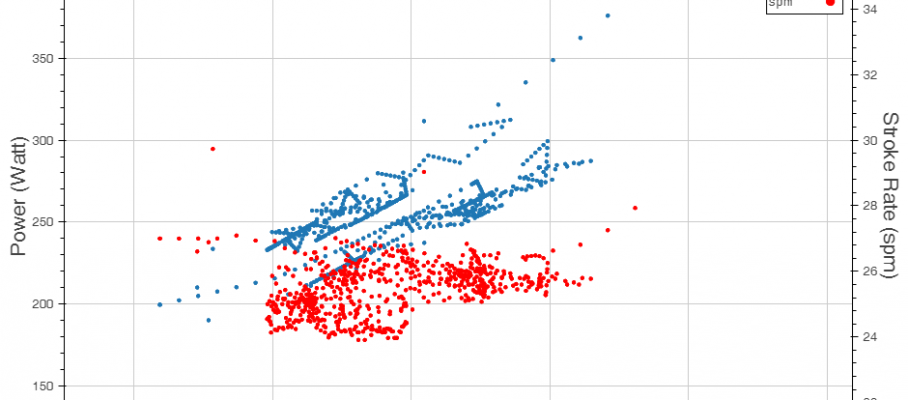
Sep 28 2016
A warned man counts for two?
Today is a bank holiday and a good day to do the 6km. The only problem is that I couldn’t row the 6km in one go from the castle to Sirka, because the tourists boats depart earlier on bank holidays, and we’re not supposed to be on the river when they operate.
So I had to do my usual 6km with a turn somewhere between 3000 and 3500m (depending on where I put the exact start). I started the session with a 2km warming up.
The plan was simple. Warned by my struggle with 1500m to go, a week ago, I decided to start slowly on purpose. If pace was faster than 2:11, I would lighten up the stroke. The idea was to row this in an even split and not slower than 2:13 average (including the turn).
I wouldn’t say that the plan went out of the window as soon as I started the 6k, but in the first 500m I just rowed what felt like a fine pace. After 500m I finally started to adhere to the plan and slowed down, but it was hard to slow down slower than 2:09 without letting the stroke rate drop below 25spm.
After 2km I passed in front of our rowing club, and noticed the head coach going out with the launch, following three singles.
The final 1000m before the turn were a bit more difficult. The lake was wobbly. Some weird standing wave. So here I finally had my 2:11 pace.
I turned around and started rowing. That’s where I noticed that what I thought was windstill weather was an ever so slight breeze, now a headwind. In the beginning nothing was wrong, but then I started to have to rate up to 26spm to hold 2:12. Then I started to drop to 2:15.
With 1500m to go I rowed in the remains of the wake of the coach launch. It wasn’t really a wake, but today the weather, wind direction, and temperature all collaborated to make the lake very bouncy and wobbly. I cannot explain it, but under certain conditions, standing waves seem to not be dampened at all. I started to get really tired, and also angry, for still rowing too hard in the beginning of the row.
Work Details
#-|SDist|-Split-|-SPace-|-SPM-|AvgHR|MaxHR|DPS-
01|06000| 26:37 |02:13.0| 25.5| 179 | 185 | 8.8
Workout Summary
--|06000| 26:37 | 2:13.0| 25.5| 179 | 185 | 8.8
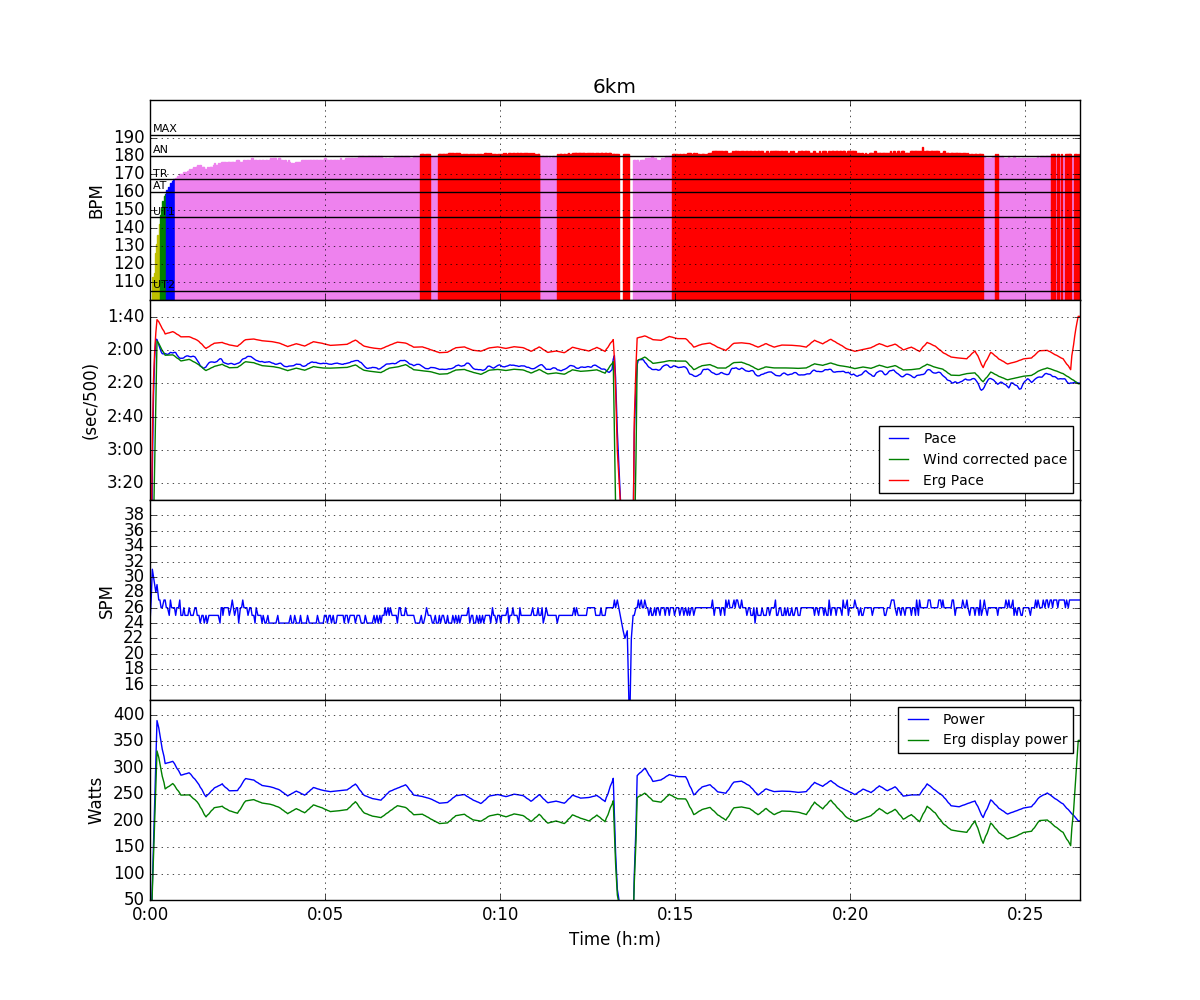
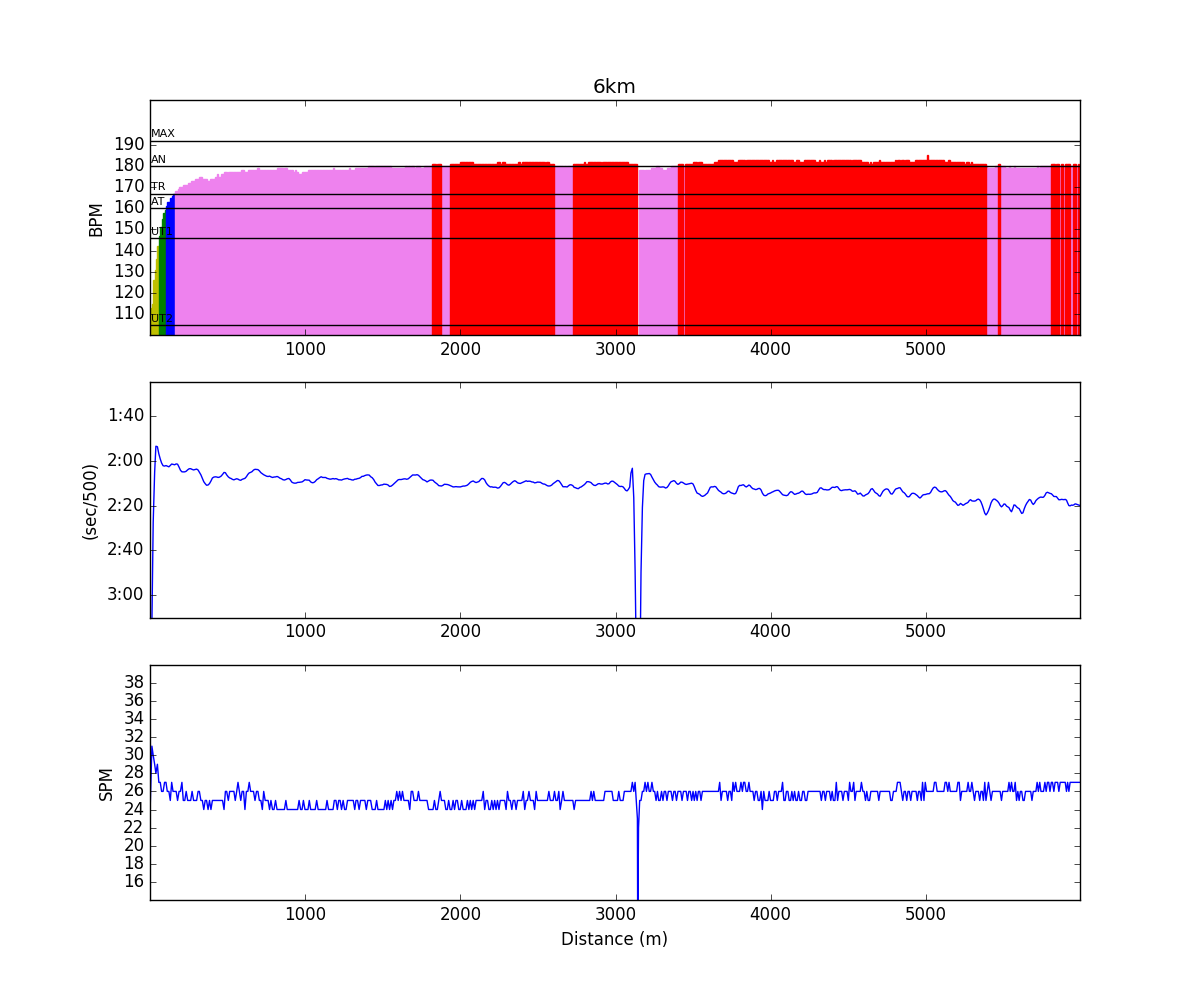
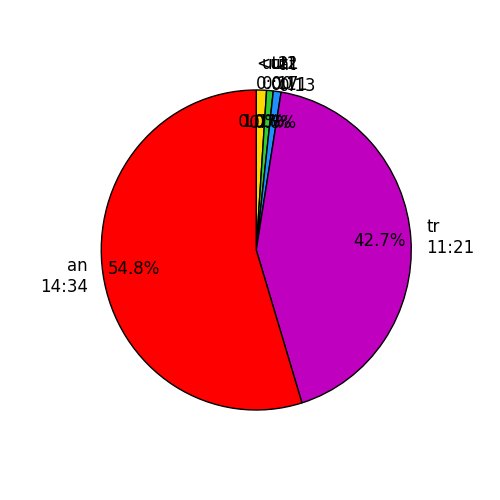
The following image is from rowsandall.com. I used 0.7 m/s as wind speed (as indicated by nearby weather stations). It shows that even though the pace dropped, I was probably rowing at a constant power anyway. The distinct power (and pace) drop in the last 1000m was me counting strokes and being quite desperate. Only with 300m to go I was able to get my act together and start pulling a bit harder again. Well, average under 2:13.0 so mission accomplished.
The following illustrates one of the new plots I have enabled on rowsandall.com. It’s basically an interactive plot where you can choose your axes. You can clearly see two groups of blue points. When I look at the time into the row, I started on the right hand side of the top group of blue dots, i.e. at high drive energy and power. Then I worked my way to the left, i.e. as the first 3km went by, my drive energy (leg force times drive length) decreased. The headwind part is the bottom group of blue dots. Again, I started on the right, and worked my way to the left, staying in that bottom group.
A list of my 6k times
Today – 26:37 (2:13.0) – with turn
21 Sep 2016 – 26:11 (2:10.9) – no turn
2 Apr 2016 – 27:22 (2:16.8) – with turn / wind / chop
26 Sep 2015 – 28:09 (2:20.9) – with turn / slow / sloppy / choppy
19 Sep 2015 – 26:15 (2:11.2) – with turn / wind
A little over a week to race time. Must. Get. Act. Together.
By sanderroosendaal • Uncategorized • 2 • Tags: 6k, head race prep, lake, rowing, single, training
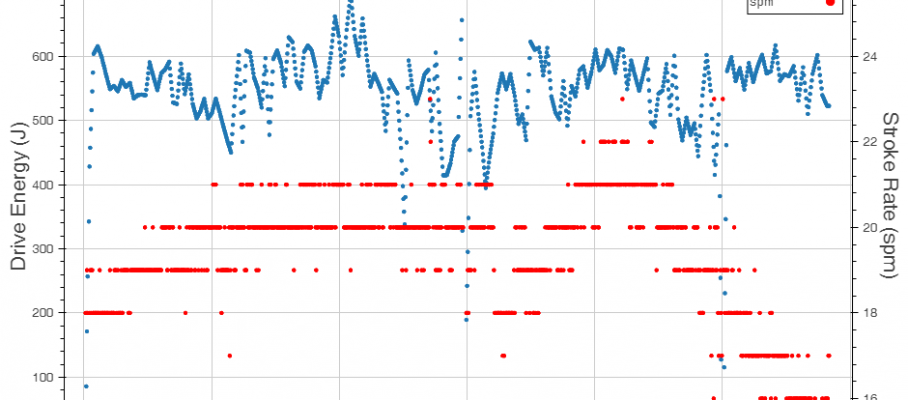
Sep 27 2016
12km Steady State OTW
Nothing fancy. Got up early, bot not early enough to do the >15km that I wanted before work. So it was 12km in the end.
https://www.strava.com/activities/726766233
I rowed up the the castle and then back. On the way to the castle, I passed two swans. These animals always make me nervous. When I was almost at the foot bridge beneath the castle, the swans came flying back. For a moment, it seemed they were flying directly towards me, but as I passed under the bridge, they passed over it, their wings flapping noisily, and landed further upstream. By the time I had reached my turning point, they were flying back downstream again.
Makes you wonder what goes on in a swan’s mind.
I did some stroke rate work on the way back.
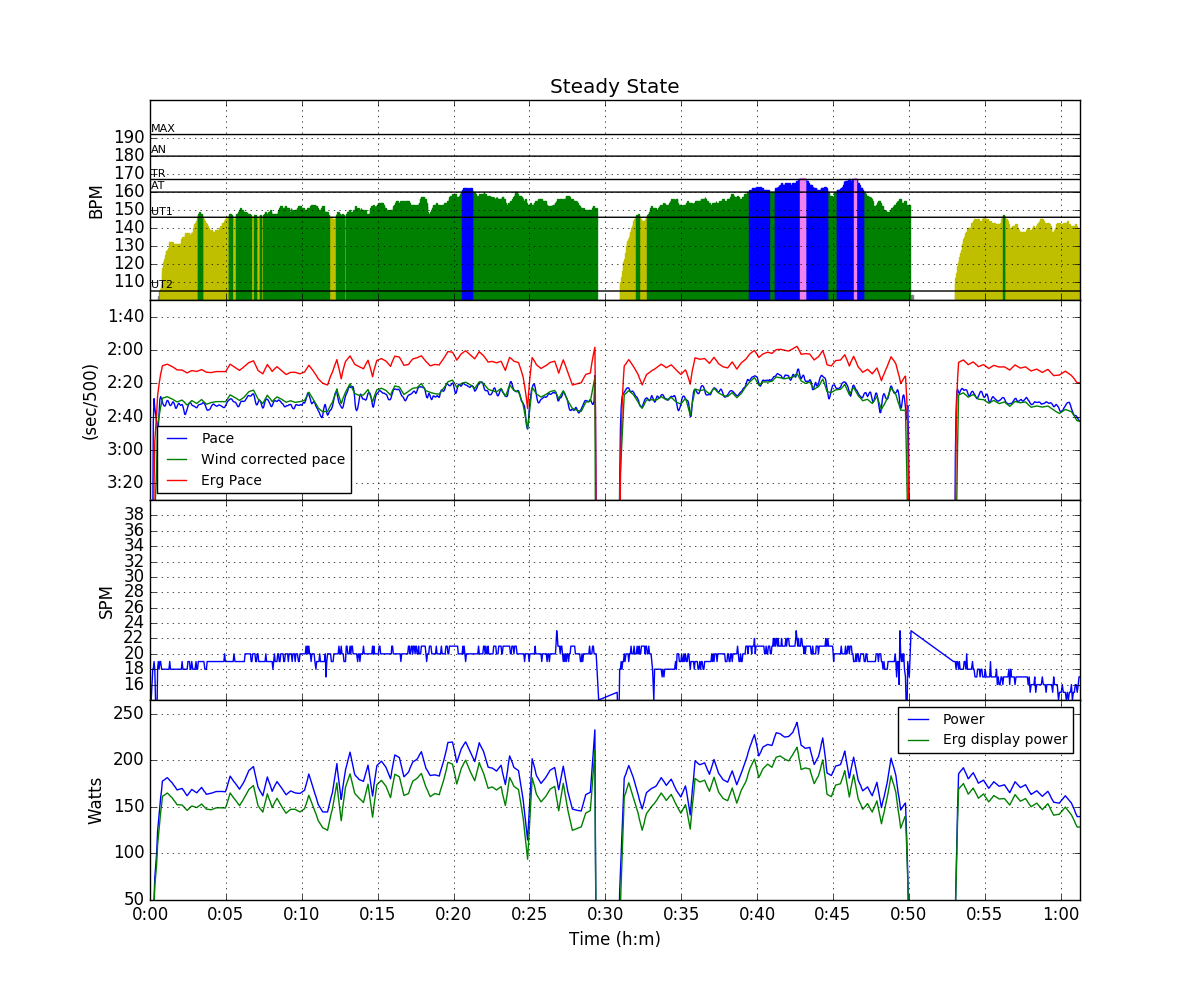

I also spend some time to add some new plotting functionality to rowsandall.com. Now it is still a hidden feature, until fully tested, but it allows you to plot various parameters against each other. It is really a preparation for Power Based Analysis. Here are two example plots:

More will follow and I will explore which plots (for OTE and OTW rowing) seem useful enough and have potential to make me row faster!
By sanderroosendaal • Uncategorized • 2 • Tags: OTW, river, rowing, single, steady state
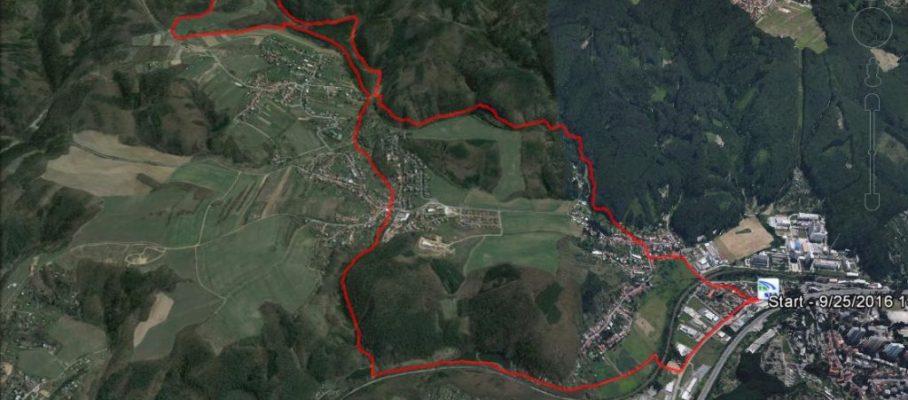
Sep 25 2016
Sunday – a nice run (low heart rate!)
Another beautiful sunny autumn day. Maximum temperature around 25 degrees C, no wind. The plan asked for a “recovery cross training” and I knew that today it was going to be my “regular” 12k run from home. I say “regular” because Strava tells me I do this run just a few times per year. Still I consider it as one of my benchmark runs.
The run starts at home, then goes slightly downhill to the next village, Mokra Hora. There, I leave the hard surface behind and enter the forest. I run along a small stream and continuously climbing with a grade between 0 and 5%, and a few shorter, steeper segments. At “Rakovec” (that is the place I pass twice on this run), a long climb starts. Until this point, I was monitoring my heart rate and let it stay in the 140-150 bpm range. At the climb from Rakovec, I was passed by a group of 5 mountain bikers. The climb has a few steeper segments (up to 15% grade) I started to pass the slower bikers of the group. At the top, I had passed three of the five riders. At the cost of a slightly harder effort and a heart rate in the 160-170 range. But my pride was saved.
Then it’s a quite fast downhill segment, to the village of Oresin, then through Jehnice, and straight on towards the railroad track, which I follow (almost flat) until I hit Brno again.
Twelve kilometers. Average pace 5:30. Average heart rate 141 beats per minute. I did the same run a year ago. It was 10 degrees colder then and my average heart rate was 10 beats higher. Then, the run was classified as “black hole”. Today it was a nice “LIT” (low intensity training).
During the run everything felt effortless. Now, I feel the muscles need a stretch and I will probably have some DOMS tomorrow.
I have been reading this reddit discussion with surprise. Apparently, there are triathletes (age groupers) who spend between 100 and 200 USD on a coach who makes their training plan and is available for discussions on progress. I wonder how much of that value I get from writing my blogs and doing training plans myself. I wonder how much of the value I miss because I do stupid things because I don’t have a coach. It’s interesting to think about this. It seems quite a lot to me. I could also say that a few months of rowing without a paid coach will save me enough money to spend on a power measuring oarlock! 🙂
By sanderroosendaal • Uncategorized • 0 • Tags: rowing, running, trail, training
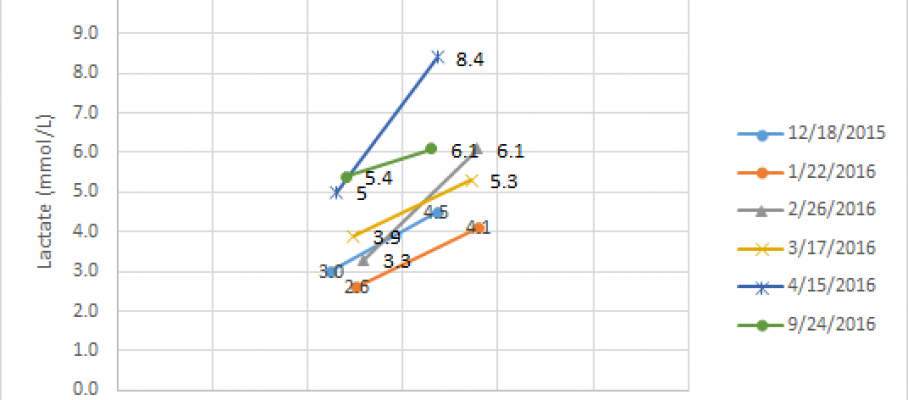
Sep 25 2016
Saturday – 2 speed Lactate test and some thinking
Time for the 2 speed lactate test again. The protocol is simple.
- Do a thorough warming up
- Row a 1k “at 6k pace”
- Take 15 minutes active rest, measuring lactate at 1 and 3 minutes
- Row a full out 1k
- Row a cooling down, measuring lactate at 1, 3, 5 and 10 minutes.
Then you plot the 1 minute values against power.
I started with a 20 minute warming up:

Then I did the first 1k:

Pretty evenly paced. I measured 5.4 mmol/L of lactate after 1 minute and 4.5 mmol/L after 3 minutes. I paddled until 15 minutes was gone, at roughly 150-160W pace.
Then I did the second 1k:

I knew this wasn’t going to be a very fast 1k, so after 10 hard strokes at the start, I settled for 300W, then tried to crank it up with 500m to go.
So here is the result (lactate in mmol/L).
| Measurement | Lactate | Power |
| 1 min | 5.4 | 270 |
| 3 min | 4.5 | |
| 1 min | 6.1 | 315 |
| 3 min | 8.1 | |
| 5 min | 7.2 | |
| 10 min | 4.3 |
The droplet of blood after 1 minute after the full out 1k was a little smaller than normal. I think the measurement was OK. It seems the lactate concentration in the muscle was just much higher and it took time to flush out the lactate. This would explain the higher value after 3 minutes.
Here is the graph of all 2 speed tests I had done in the past 12 months:
The chart looks like a game of Mikado (or pick-up sticks) and it is hard to understand what is going on. I have been rereading on Lactate, especially this article. I picked up my old simple numerical model and tried to model the recent three series of lactate step tests I did in September.
Not an ideal fit but it is interesting to look at the parameters.
| Nov ’15 | Sep ’16 | ||
| Pthreshold | 200 | 195 | W |
| beta | 0.1 | 0.15 | |
| C_La rest | 0.7 | 1.5 | mmol/L |
| V_La_max | 0.1 | 0.2 | mmol/L/s |
Pthreshold is the threshold Power. The parameter “beta” is a parameter which governs lactate usage as fuel in the aerobic pathway (higher values mean more lactate can be used as fuel during aerobic exercise). “C_La_rest” is the rest value of lactate (which I measured today), and “V_La_max” is a parameter which governs how fast lactate is produced once you are above the threshold. So the hypothesis is that my threshold power has shifted to the left (bad), but I am better at burning lactate during aerobic exercise. At the same time, I have become better at producing a lot of lactate when above the threshold.
The model should be taken with a very big grain of salt. It’s all very crude and simplified at the moment. Take it as an illustration of my current understanding of lactate “science”. Instead of looking at individual test results, you have to build a model of how blood lactate is generated and used. In “Olbrecht” language, my Aerobic Capacity has slightly decreased, but my Anaerobic Capacity has improved a lot.
Now, if I knew what that means in terms of race performance, and how to use the result to fine tune my training plan … that would be great.
By sanderroosendaal • Uncategorized • 0 • Tags: lactate, lactate testing, OTE, rowing, training
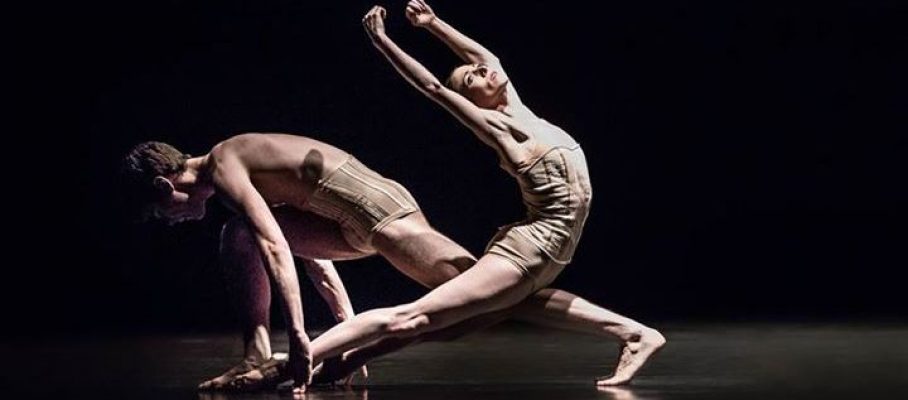
Sep 25 2016
Friday – 20×60’/60′ rest
Thursday
My parents are visiting from the Netherlands, so training was squeezed for social reasons. On Thursday, I did a steady state session in the morning. Only 40 minutes, and because it felt very hard, at a low power. I just started rowing, following a few Wolverine Plan L4 stroke rate sequences, and stopped after 40 minutes:
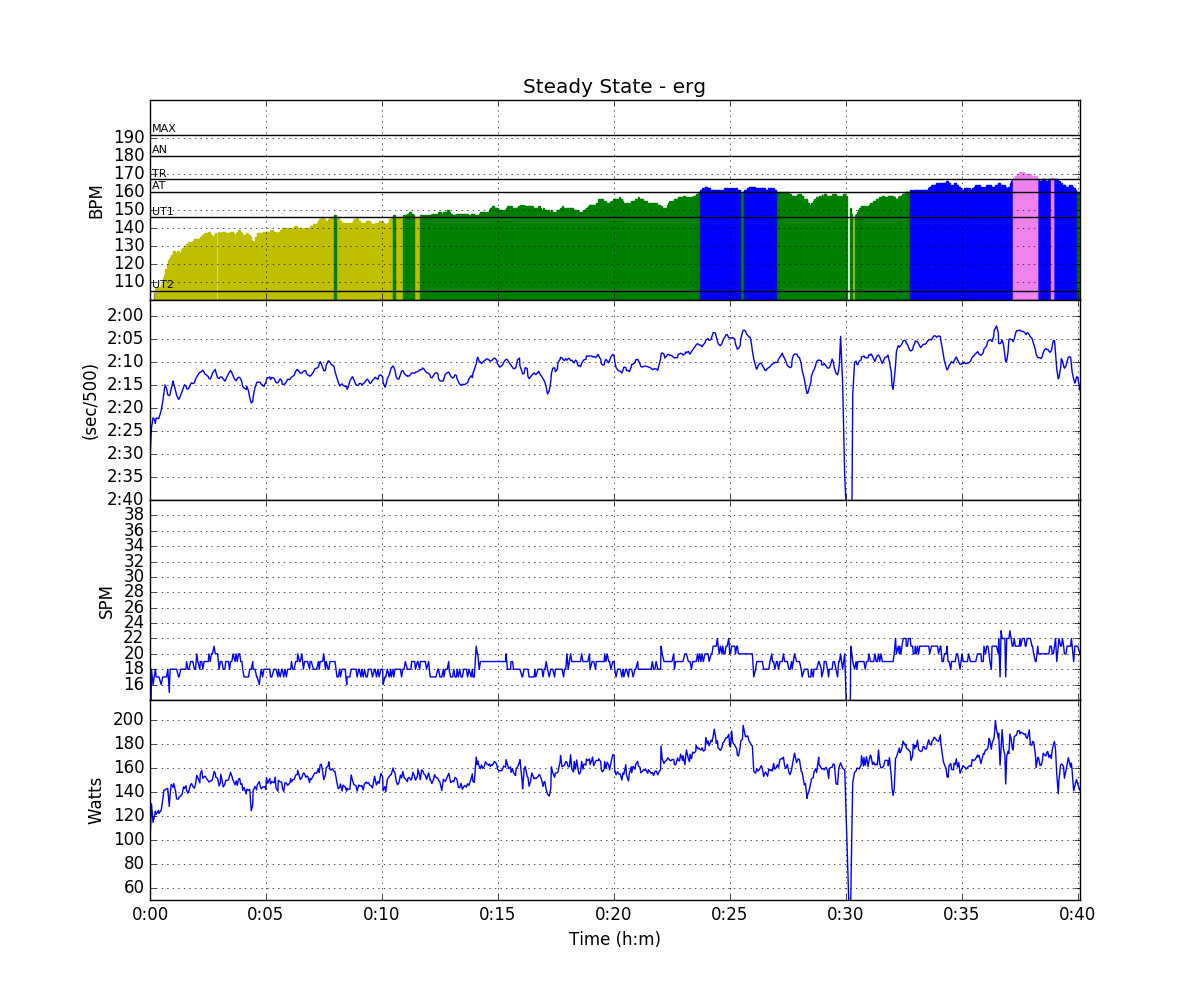
Friday
Another session in the morning, to have the rest of the day for work (partly) and being a tour guide around Brno.
This time it was 20x1min/1min rest. In the past winter, I have done this at much faster average pace, but ok.
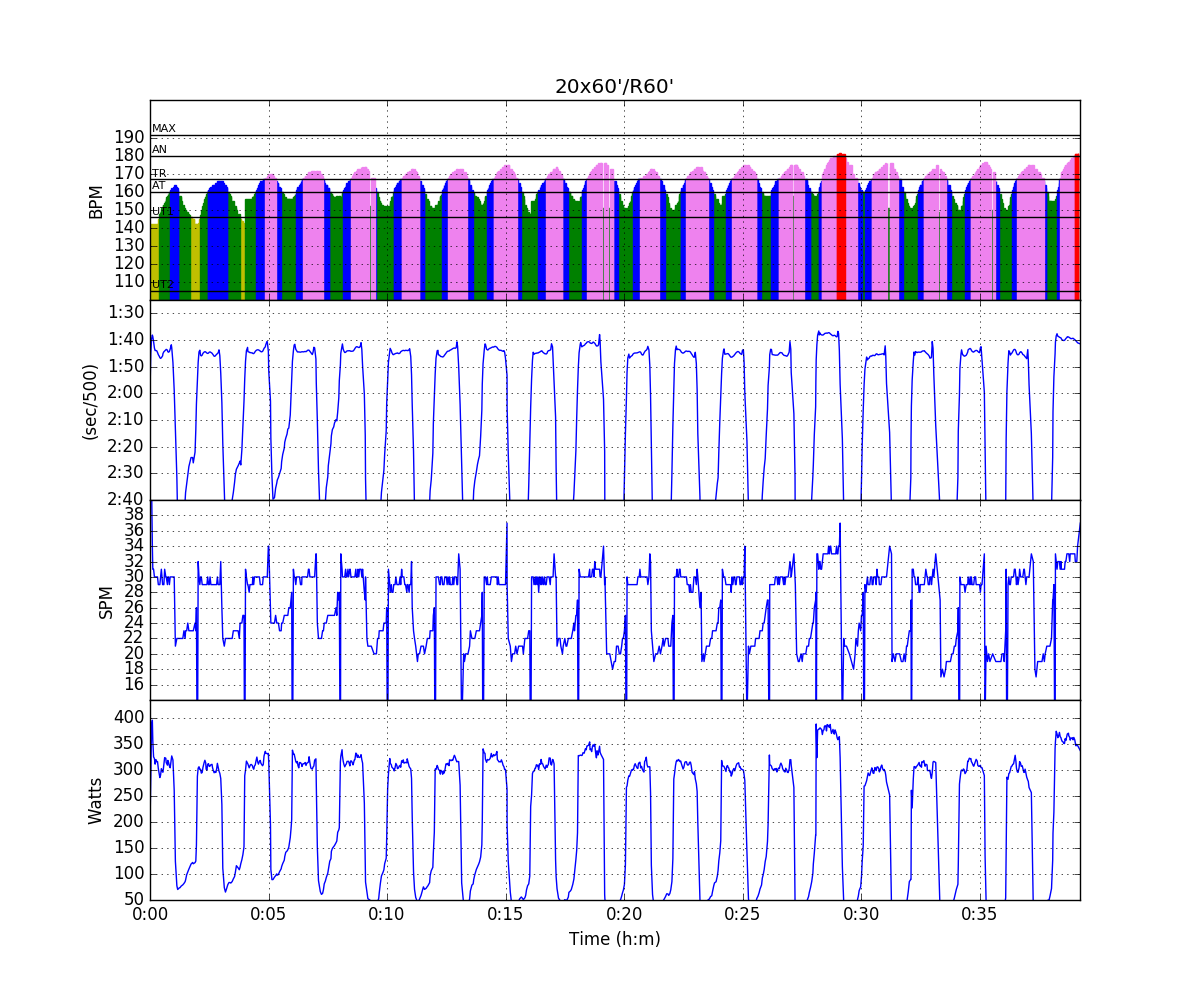
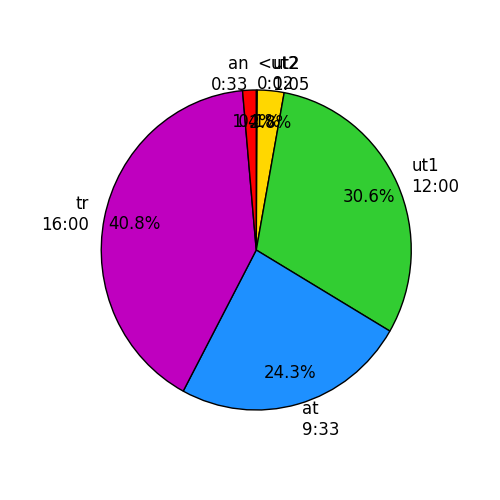
According to the PM5, I did an average pace of 1:43.6. We had a great night out at the Brno Opera theatre.
By sanderroosendaal • Uncategorized • 0 • Tags: ANC, OTE, rowing, steady state, training
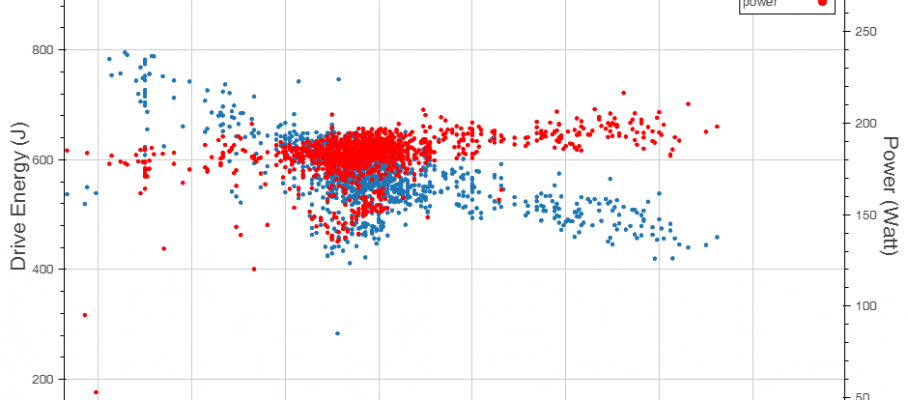



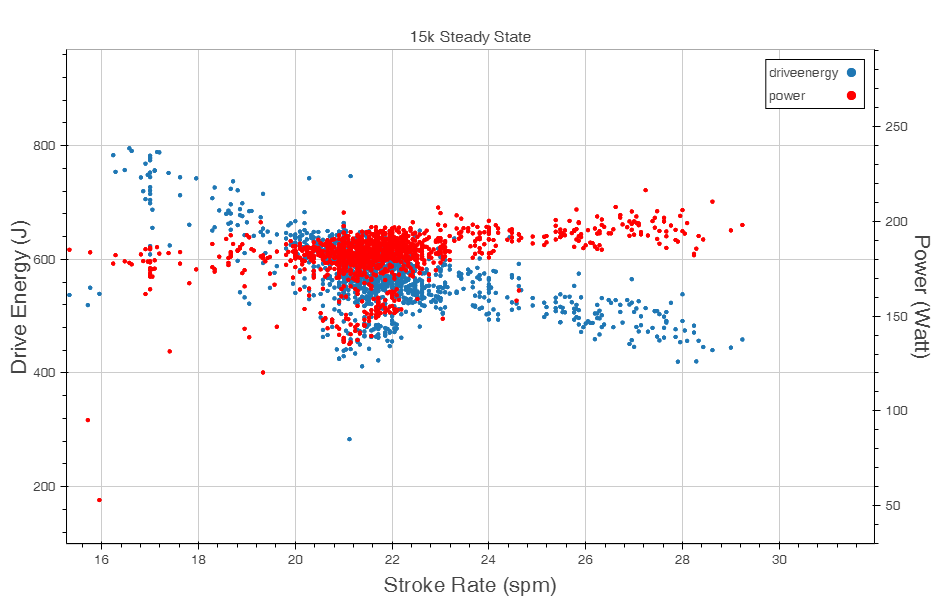
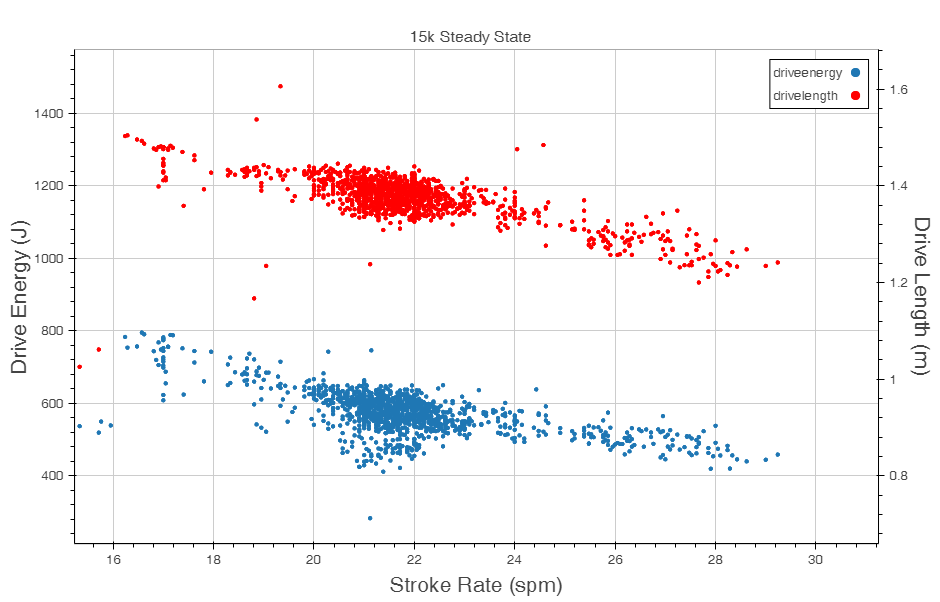

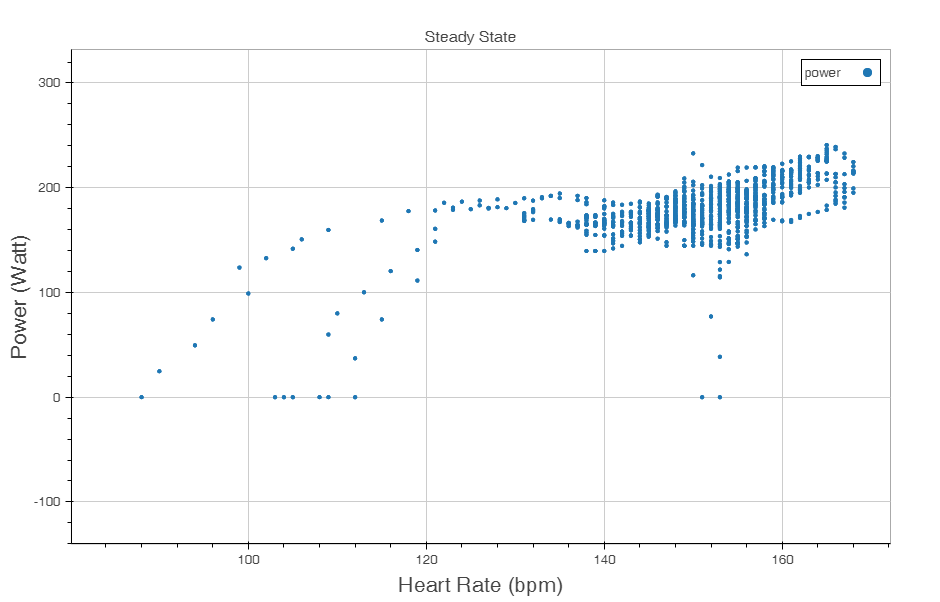
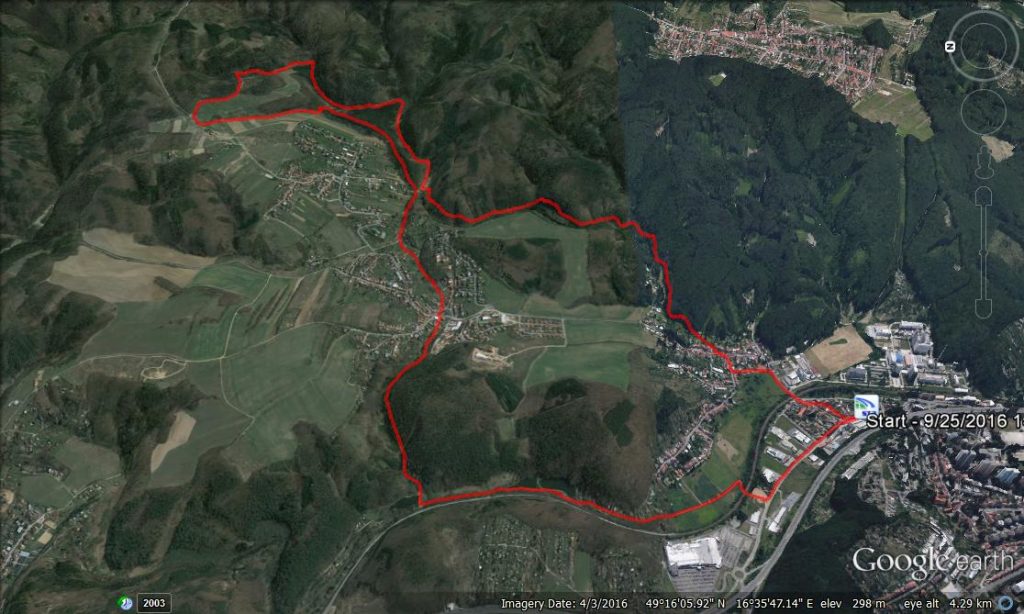
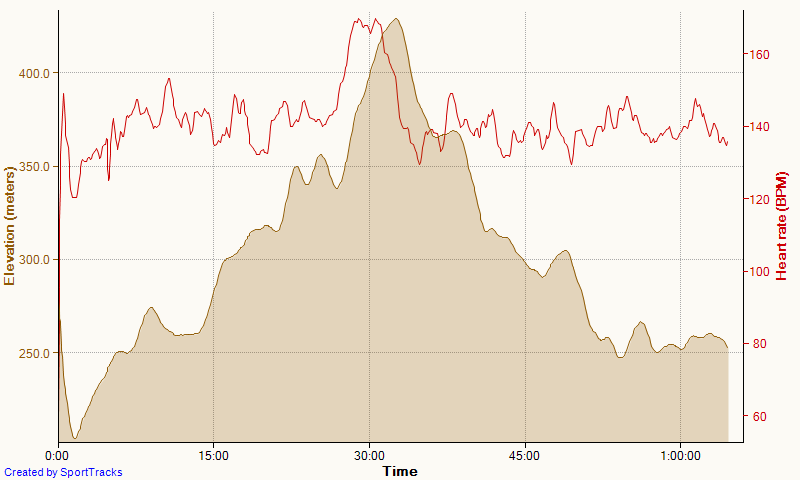
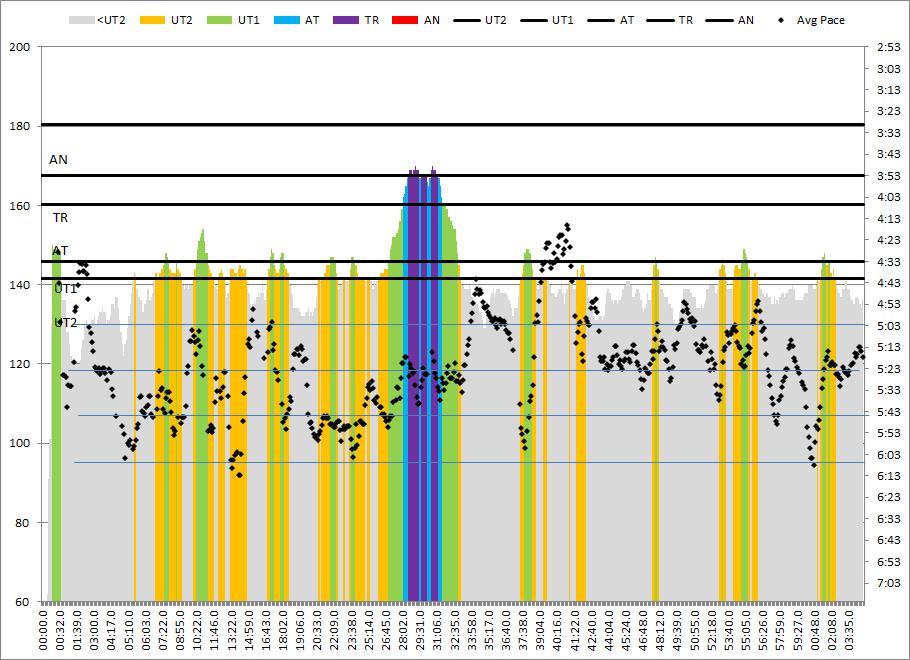
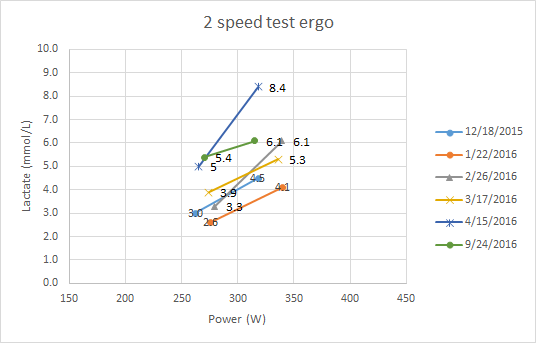
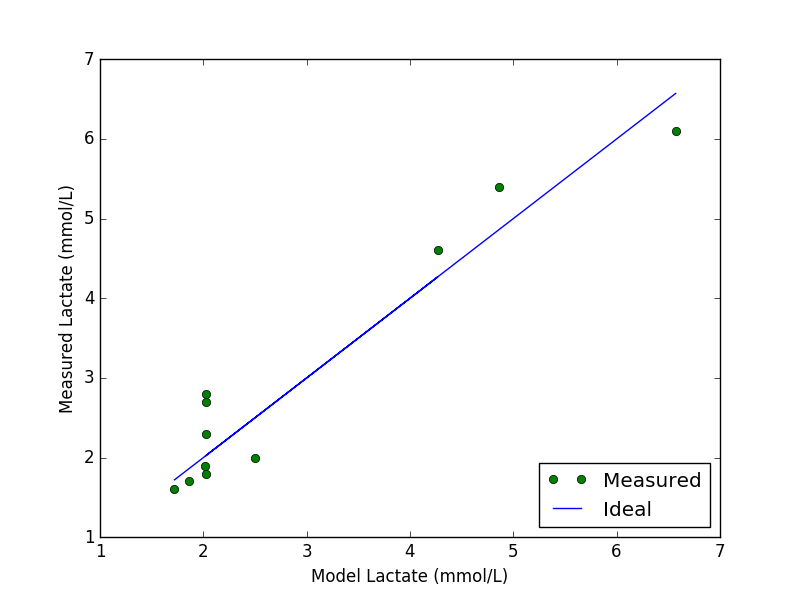
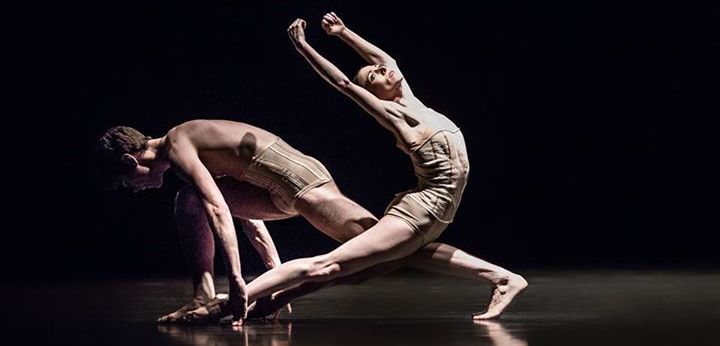
Sep 30 2016
University Eights in Brno (CZ) – tradition renewed
The Czech town of Brno has two universities, the Technical University and the Masaryk University. In 1937, the two universities raced each other in eights for the first time.
World War II came in between.
The race was held again in 1946 and in 1947.
The communist took over power. Rowing was an “elite” sport and the universities race did not happen any more.
Last year, in 2015, our club ČVK Brno, organized the “zeroth” edition of the renewed university eights, which was won by the Technical University.
This year, we have enhanced the program. On Friday, the two local universities race each other. Tomorrow, on Saturday, we have three more eights. There will be 1:1 heats, repechages, semifinal and final.
The race is rowed on the river Svratka. Narrow, and twisty. The entire event is pretty small. Here is a video impression.
By sanderroosendaal • Uncategorized • 0 • Tags: brno, cvk brno, eight, race, university rowing